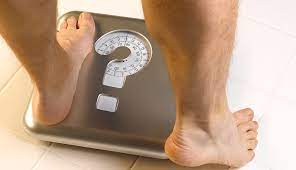The Benefits of Resistance training – any exercise that challenges muscles to work against a weight or force – can increase metabolism and improve heart health, balance and muscle strength. Resistance benefits so many things and that’s what this article is about.

In an ideal world, your fat loss workouts should incorporate both cardio and resistance training. Studies suggest that strength training combined with a calorie deficit is more efficient at burning fat than cardio alone and helps keep up your metabolism long after the gym session has ended.
Table of Contents
- Increased Muscle Strength
- Increased Bone Density
- Reduced Risk of Osteoporosis
- Reduced Risk of Diabetes
- Frequently Asked Questions About Resistance Training for Weight Loss
- What is resistance training?
- How does resistance training help with weight loss?
- Can resistance training alone help with weight loss?
- How does resistance training improve muscle strength?
- Is it necessary to lift heavy weights for resistance training?
- Can resistance training help in fat loss?
- How often should I switch up my resistance training routine?
- Does resistance training improve bone density?
- Can resistance training reduce the risk of osteoporosis?
- Can resistance training help in reducing the risk of diabetes?
- Related Posts
Increased Muscle Strength
Strength training helps build and strengthen muscles, improving their size and coordination for tasks requiring strength. Stronger muscles allow you to walk or run faster, lift heavier items, and do stairs without getting hurt. Furthermore, increased muscle mass and coordination help speed up recovery from exercise-related injuries.
When starting resistance training, it can take some time and dedication to build up muscle strength. This is because neural adaptation occurs, causing the nerves that send signals to your muscles to fire more frequently. Over time, this can result in muscle gains plateauing or levelling off.
To build strength, you’ll need to follow a program that incorporates various exercises with various reps. Additionally, make sure you take some rest days between workouts.
When developing strength, use weights that are heavy enough to challenge your muscles but light enough for proper lifting. Start with one to three repetitions per set and increase as you become stronger; just make sure you follow a proper work:rest ratio so that your muscles don’t get overextended.
Resistance training not only builds the strength of your muscles, but it can also aid in fat loss. The more muscle mass you have, the higher the number of calories burned during each day.
To maximize your BMR (Basal Metabolic Rate), train with heavier weights and shorter rest periods between sets. This encourages your body to burn more fat during the day while increasing resting metabolic rate – this keeps your metabolism burning calories even after your workout session is over.
It is essential to switch up your exercise regimen every few weeks, in order to prevent muscle atrophy from the same exercises over time. Doing this helps avoid training plateaus, injuries, and boredom from setting in.
Strength training has another benefit that may reduce your risk for osteoporosis, back pain and other chronic health issues. Muscle strength has been linked to increased bone density and reduced bone loss – particularly beneficial for older adults or people living with osteoporosis.
Increased Bone Density
Strength training not only builds muscles, but it’s also known to increase bone density. This is because resistance exercise causes bones to break down and rebuild, leading to the formation of new bone.
Bones are composed of calcium-rich tissue that is porous and filled with tiny holes. These openings allow calcium to seep into the bone, creating dense density (hardness and strength).
Your family genes determine your peak bone mass, or the maximum amount of bone you can have at any given time. During childhood, adolescence and early adulthood, your bones build mass as they absorb calcium from food sources. Unfortunately, once menopause arrives, bone loss may begin leading to osteoporosis.
When it comes to preventing bone loss, nutrition is key. Eating plenty of calcium-rich foods and proteins will help maintain the strength of your bones. Additionally, eating plenty of vegetables and fruits – which are low in calories but high in vitamins and minerals – will promote good bone health as well.
Additionally, it is crucial to avoid excessive alcohol and smoking since both can reduce bone density. Furthermore, regular exercises like walking, running or jogging are great for maintaining bone health and helping prevent osteoporosis.
Measuring your bone density can be done through a bone scan. The most popular way to do this is dual-energy x-ray absorptiometry or DEXA. A doctor will measure the density of your four lumbar vertebrae, femur, and wrist using this method.
In addition to measuring bone density, doctors also use these tests to detect osteoporosis–a condition in which your bones become so weak they may fracture easily. If the results reveal you have osteoporosis, your physician may prescribe medication to maintain healthy bone density and help avoid future fractures.
A 2003 study published in Postgraduate Medical Journal revealed that overweight or postmenopausal women who added strength training to their routine experienced improved bone density in the spine and hips. This could be attributed to increased stress placed on bones through weight lifting, leading to the formation of new bone tissue.
Reduced Risk of Osteoporosis
Resistance training for weight loss not only strengthens your muscles, but it can also keep your bones strong and healthy. Exercise regularly to maintain bone density, which reduces the risk of osteoporosis.
It is essential to maintain bone density as you age, since as bones begin to weaken with age. This can lead to fractures which are painful and difficult to recover from.
Osteoporosis is a relatively common disorder that affects older individuals, particularly women. This silent condition causes bones to lose calcium and other essential minerals, leaving them less dense and weaker in structure.
Osteoporosis is a serious issue for all adults, as it can lead to painful fractures that significantly restrict your movement and independence. That is why it’s essential to understand your bone health and take steps to prevent osteoporosis from occurring.
One of the best ways to prevent osteoporosis is through a balanced diet and regular physical activity. Making sure you get enough calcium and vitamin D into your system will also help keep your bones strong.
Other factors that may increase your osteoporosis risk include smoking, certain medical conditions (like rheumatoid arthritis), and taking certain medications. Discuss with your doctor any medications you are taking and their potential effects on your bones.
Eating habits can also contribute to the development of osteoporosis, such as a poor diet that lacks calcium or vitamin D in your meals. Furthermore, research has demonstrated that consuming too many carbonated soft drinks is linked with an increased risk for this condition.
Sleep is essential for maintaining healthy bones. Aim to get 7 to 8 hours of shut-eye each night so your body gets the rest it requires.
A healthy diet is important, but weight-bearing exercises should also be included in your routine. This includes weightlifting, jogging and walking – it’s recommended that these activities be done together with other forms of exercise to maximize their effects and prevent injury.
Reduced Risk of Diabetes
Nearly one in three Americans has prediabetes, a condition that puts them at an increased risk for type 2 diabetes. But lifestyle changes like regular exercise and resistance training can reduce your risk for this condition.
According to the American Diabetes Association, regular exercise can help lower your blood sugar and improve insulin sensitivity. Furthermore, it may aid in maintaining a healthy weight as well as controlling cholesterol levels.
A recent study from the University of Michigan has demonstrated that strength training can aid weight loss and regulate blood sugar levels. They discovered that increased muscle mass helps the body burn fat more efficiently, thus keeping you healthier overall.
Building muscle requires dedication and hard work. For instance, set achievable goals and set aside enough time to plan your workouts. Furthermore, make sure your muscles have time to recover after each session.
Gaining muscle mass doesn’t need to be a daunting challenge. All it takes is an effective training regimen and precise nutrition.
According to the American College of Sports Medicine, you should perform resistance exercises at least twice a week for optimal benefits. However, an experienced trainer can customize your program according to personal goals and availability.
As a general guideline, aim to lift 6-12 reps per set and perform at least two sets of each exercise. Rest for at least 48 hours between workouts so your muscles can grow bigger and stronger.
Eating a nutritious diet and abstaining from sugary drinks such as sodas, tea, and coffee can also help lower your risk for developing diabetes. Eating balanced meals and limiting alcohol consumption will both lower these risks.
Type 2 diabetes can be a challenging condition to manage, but the good news is that it’s curable with the right medications and diet. Furthermore, there’s mounting evidence showing resistance training for weight loss may reduce your risk of developing this disorder.
Frequently Asked Questions About Resistance Training for Weight Loss
-
What is resistance training?
Resistance training refers to any exercise that challenges muscles to work against a weight or force. It involves repetitive movements that build muscle strength and improve overall fitness.
-
How does resistance training help with weight loss?
Resistance training can increase metabolism, which leads to more calories burned throughout the day. It also helps build muscle mass, and since muscles burn more calories than fat, this can aid in weight loss efforts.
-
Can resistance training alone help with weight loss?
While resistance training offers numerous benefits, combining it with cardio exercises and maintaining a calorie deficit is typically more effective for weight loss than relying solely on resistance training.
-
How does resistance training improve muscle strength?
Resistance training stimulates the muscles to adapt and grow stronger over time. It helps build and strengthen muscles, improving their size and coordination for tasks requiring strength.
-
Is it necessary to lift heavy weights for resistance training?
The weight used for resistance training should be challenging enough to stimulate muscle growth but not too heavy that it compromises proper form. It is recommended to gradually increase weights as you become stronger.
-
Can resistance training help in fat loss?
Yes, resistance training can aid in fat loss. The more muscle mass you have, the higher your basal metabolic rate (BMR), resulting in more calories burned throughout the day, even during rest.
-
How often should I switch up my resistance training routine?
It is recommended to switch up your exercise regimen every few weeks to prevent muscle atrophy and avoid training plateaus. Varying exercises, reps, and weights can help keep your workouts effective and engaging.
-
Does resistance training improve bone density?
Yes, resistance training has been shown to increase bone density. The stress placed on bones during resistance exercises stimulates bone growth and helps reduce the risk of osteoporosis.
-
Can resistance training reduce the risk of osteoporosis?
Yes, regular resistance training can help maintain bone density and reduce the risk of osteoporosis, particularly in older adults. The weight-bearing nature of resistance exercises helps strengthen bones and improve overall bone health.
-
Can resistance training help in reducing the risk of diabetes?
Yes, resistance training, along with regular exercise, can help lower the risk of developing type 2 diabetes. It improves insulin sensitivity and aids in weight management, both of which are beneficial in diabetes prevention.


